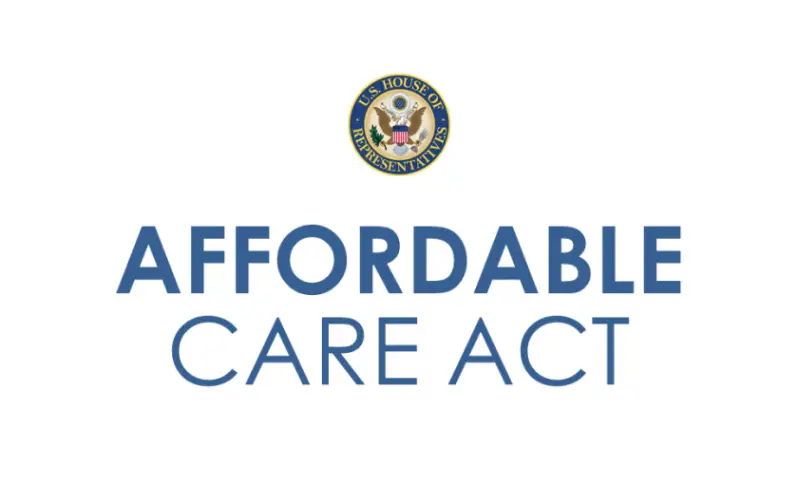Donald Trump – Everything to Know for the 2024 Election
By Nathan Colagross & Bella Wargo, Mentor High School (Ohio)
Advisor’s Note: For our profiles on the presidential candidates, Cardinal Nation chose the following methodology: two writers collaborated on both profiles. Each has their own preference for a candidate in the 2024 presidential race, and took the lead on writing the profile for the candidate they do NOT prefer. Their partner then had to approve the profile that the other student wrote. This is their objective summaries of the candidates facing off for President of the United States in the election that concludes on November 5.
On November 5th, the United States will select its 47th president to govern the nation for the next four years. The election season comes to a head after months of campaigns and debates by presidential candidates as well as voting from citizens of the United States. In the 2024 election season, two primary candidates are up for election: Democratic nominee Kamala D. Harris, vice president under Joseph R. Biden, and Republican nominee Donald J. Trump Jr., the 45th President of the United States. Now, Cardinal Nation takes a deeper look into former President Donald Trump as he campaigns for a second term, reviewing his start in politics, his first term as president, and his proposed policies if elected president of the Free World in November.
Origins
Fred Trump, father to Donald Trump Jr. (Library of Congress – Public Domain)
On June 14th, 1946, Donald Trump was born into a family of success, with his father, Fred Trump, already owning and operating major business centers and housing districts across New York. At age 13, Trump was enrolled in the New York Military Academy, enjoying the military lifestyle and gaining a higher level of discipline. However, this was the extent of Trump’s military “service,” as his birthday was one of the final to be called in the Vietnam War draft. After leaving the Military Academy in New York, Trump attended the University of Pennsylvania in 1968, earning a bachelor’s degree in economics.
Throughout his early adulthood, Trump cultivated various relationships with Democratic politicians in New York, using his father to build his collection of connections. Instead of utilizing their position in the government to bolster their political careers, Donald and Fred Trump used these connections to gain preferential treatment in taxation and regulations that benefitted their real estate empire, which Donald Trump took over in 1971.
Donald Trump in his office, 1996 (Public Domain)
While most presidents have experience in the political field long before they run for election, Trump’s involvement was largely minimal. Even throughout his 40s and 50s, Trump would not remain loyal to a specific political party, registering as a Republican in 1987, the Reform Party in 1999, and as a Democrat in 2001. He also registered as a Republican in 2009, Unaffiliated in 2011, and then officially registered Republican in 2012, where he has remained since.
Lesser known of Trump’s political career is his attempt at president in 2000, dropping out months into the campaign. Throughout his campaign, however, Trump ran on policies of free trade, budget deficit reduction, and universal healthcare, painting himself as “very conservative.” Much of his early policies still carry over into his modern campaigns: tax reduction, opposition to gun control, and social security reform.
Election of 2016
Donald Trump wearing “Make America Great Again” slogan hat (Wikimedia Commons – Public Domain)
On June 16th, 2015, Trump announced his election campaign from Trump Tower. There, he declared the mission for his presidential run: immigration, bringing jobs back to America, the national debt, and Islamic Terrorism. Famously, Trump also coined his “Make America Great Again” campaign slogan on this day, which still fuels support from many of his voters.
Against Trump was the Democratic candidate Hillary Clinton, who ran for policies of universal healthcare, firearm reform, abortion rights, marriage equality, and progressive taxation. Early in the race, Clinton was significantly ahead of Trump at the polls. However, Clinton’s long history in the political public spotlight grew a large portion of voters who disliked her behaviors, regardless of her policies. Despite controversies from both candidates, support still ran strong and carried deep into election season.
On November 9th, 2016, the polls closed and the results began being counted. In the popular vote, Clinton took the victory, with 48% of voters siding with the Democrats. Closely behind was Trump’s 46% popular vote value. However, the result of the Electoral College portrayed a different outcome. In the end, Trump took home 306 electoral votes to Clinton’s 232, placing the Republicans in the Oval Office. Taking a closer look, seven electors ended up voting opposite of their elected beliefs, contributing additional votes to Trump’s cause.
The Trump Administration (2017-2021)
Immediately upon Trump’s entrance into office in January of 2017, the purpose of the administration was clear: deregulation. Such became the case as within the first 24 months, over 243 major items had been deregulated. Not only did Trump focus on a stepback from government involvement, but other major changes were being made in many other fields, including the:
Former President Trump signing disaster relief aid legislation aboard Air Force One (Wikimedia Commons – Public Domain)
- Creation of over seven million new jobs and the lowering of the unemployment rate, especially of colored, Hispanic, and Asian citizens, to 3.5%, the lowest in 50 years
- Lifting of seven million individuals from reliance on food stamps
- Elimination of eight regulations for every new regulation put in place
- Establishment of the United States as the world’s top oil and natural gas producer
- Building of over 400 miles of advanced border walls and prosecution of record numbers of immigration-related crimes
- Rebuilding of the United States military with over $2.2 trillion committed to defense spending
- Pledging of $38 billion towards building clean water infrastructure.
Among various other achievements, the Trump Administration was favored by many Republican voters for its work. However, the four years of Trump’s presidency did not come without controversy, facing two impeachments and criticism for his response to the Covid-19 pandemic.
Trump’s first impeachment case was brought before Congress due to phone calls between Donald Trump and Ukrainian President Volodymyr Zelenskyy. In the calls, Trump reportedly asked for the Ukrainian president to announce an investigation into his 2020 election rival, President Joseph Biden, former vice president under Barack Obama, and frontrunner for the Democratic nomination. Grounds were also placed for impeachment over the freezing of $400 million in foreign aid to Ukraine by direct order of the president. Those advocating for impeachment argued that asking for help from foreign influences in domestic elections was illegal. Ultimately, the former president was acquitted of wrongdoing, as the Senate failed to gain even 50% of votes in favor of removing the former president from office.
The second impeachment charge brought against Donald Trump was in response to the insurrection of January 6th, 2021, where Trump and other Republican voters attempted to decertify the election of 2020, in which Trump was not re-elected. However, due to the efforts of Republicans in Congress and the debate over the constitutionality of impeaching a president who is already destined to leave office, Trump was once again acquitted after prosecutors failed to garner a supermajority.
Former President Trump boasting his acquittal on both impeachment charges (Shealah Craighead – Public Domain)
Other controversies during the Trump Administration came during the outbreak of the COVID-19 pandemic, where the response from the former president received major criticism. While the administration was firm in its shutdown of travel from China and many European nations, the efficiency with which the former president responded allowed for the virus to enter and spread throughout the United States, largely rendering the containment efforts useless. Though, the president mandated the distribution of billions of items of personal protective equipment and oversaw the administration of two effective vaccines by the end of his term. Still, Trump left a majority of response efforts to the State legislatures, placing the task of responding to the pandemic away from the Federal Government. Later, Trump summed up the overall goal of the relaxed response, stating, “I still like playing it down because I don’t want to create a panic.”
Citizens gather to protest the actions of Former President Trump (Ted Eytan – Public Domain)
Ultimately, the Trump Administration achieved both positive and negative results with advancements in deregulation but also drawbacks in controversy. Historians even labeled the presidency as one of the worst in the nation’s history, ranking 41st of 44th presidents. On the other hand, 37% of Republicans thought Trump was the best president of the last 40 years.
The election of 2020, in a race between Republican Donald Trump, up for re-election, and Democrat Joe Biden, turned up a victory for the Democratic party, with Trump falling short in the electoral college, garnering 232 votes to Biden’s 306. Around 8 AM on January 20th, 2021, Trump exited the White House to allow for the inauguration of Joe Biden, marking the end of his first presidential term. Upon leaving, Trump claimed, “We will see each other again” in reference to future political ambitions.
Current Policies
Trump’s current campaign hopes to continue much of what was started in his first term if re-elected in 2024, holding many of the same political views as during the original administration.
Economic
Trump currently proposed continuing regressive tax cuts from 2017, benefitting businesses and top earners who provide jobs to US citizens. He also proposes a full elimination of tax on tips as well as the elimination of income taxes on Social Security benefits. Further, Trump pledges to slow inflation by placing tariffs on all imported goods to the United States and straying away from big government spending.
Donald Trump campaigning at a rally in Arizona, 2024 (Wikimedia Commons – Public Domain)
Abortion and IVF
Trump has remained deadset on leaving abortion policy up to individual states. Further, he has viewed negatively plans for banning abortion after 6 weeks of pregnancy, arguing that the cutoff needed to be greatly extended, allowing more freedom to mothers. Even more, Trump proposed that the services of in vitro fertilization (IVF) be paid for by the Federal Government and insurance companies, freeing citizens from the expensive process.
Immigration
Trump’s immigration plans are perhaps the largest of his proposed policies. The campaign has vowed to undertake one of the largest deportation efforts of illegal immigrants in the nation’s history and proposed the elimination of birthright citizenship for children born to illegal parents. Trump has also expressed interest in denying access to legal immigrants and refugees based on ideological backgrounds and beliefs, as was done for periods of time on multiple occasions during his first term as president, to protect the nation from “Foreign Terrorist Entry.” In another term, Trump says these actions would bar Marxists and Communists from entry. Trump also proposed a major escalation in border patrol use for catch-and-release programs on illegal border crossings.
Education
Trump is largely in favor of a breakup of the Department of Education in favor of regulation at state levels and the elimination of federal spending for the teaching of Critical Race Theory and Transgender studies in schools. He also supports providing incentives to schools to employ fewer administrators, directly elect a principal, implement a Parental Bill of Rights, and hire educators with patriotic values.
Climate
Trump’s large natural energy plans propose making larger use of the natural resources found within the United States, proposing “Drill, Baby, Drill” campaigns to lift regulations on energy production including the limiting of the Environmental Protection Agency, allowing for the rapid growth of American oil and gas production. This plan, Trump claims, would cut energy prices in half for consumers and lower gasoline prices. Further, Trump pledged a second administration would once again see the exit of the United States from the Paris Climate Accords, seen as very restricting by many Republicans.
Firearms
Trump has pledged to keep regulations away from firearms, vowing to defend citizens’ rights to own weapons. Though claiming to want to take a deeper look at restrictions due to school shootings, Trump frames himself as “The best friend gun owners have ever had in the White House.”
Foreign
Former President Trump signing legislation strengthening Child Welfare (Andrea Hanks – Public Domain)
Trump remains a large supporter of Israel, despite his distaste for their handling of the war in Gaza. He also proposed the slowing of foreign aid to Ukraine in its fight against Russia, offering loan-based programs and the increase in NATO defense spending instead. Trump also has famously made groundbreaking friendly connections with Russian President Vladimir Putin. Concerning China, Trump has mentioned escalating the trade war and threatened the removal of favorable regulations toward Chinese business in United States farmland and importation of goods. Trump has also proposed that Taiwan should be paying for the protection of the United States military.
A Second Trump Administration
Knowing the extent of the Republican nominee’s current policy, it’s important to understand what these actions could look like in a second Trump term. Much of a second term would continue work from the 2017-2021 years in office, implementing many of the policies previously mentioned including immigration, economic, climate, and education reforms.
Despite being the first president to be criminally convicted, Trump remains in great standing among voters. Many of his policies, with the support of a Republican-controlled Congress, can be pushed through at a rapid pace. While some see this use of power for so much change as a threat to American democracy, others see his efforts as patriotic and a return to American roots.
With available power in a second term, Trump would pardon every person who participated in the Capitol Riots on January 6th and pursue criminal trials, though not specifying for what reason, for 46th President Joe Biden, if legally allowed to do so. He would also significantly raise tariffs on imports, restricting the influence of foreign goods and increasing domestic consumption. Further, Trump would cease the majority of funding directly from the United States to Ukraine, opting rather to go through NATO and forcing those nations to contribute additional funds towards the aid packages.
Former US President Trump meeting with Ukrainian President Volodymyr Zelenskyy (Shealah Craighead – Public Domain)
In regard to direct military action, Trump has threatened to pull forces from military bases in South Korea if funding from the nation does not increase. He also threatened direct deployment of troops in support of Israel if a major direct attack from Iran were to occur.
A second administration would also see large social changes, as Trump moves away from the social equity and diversity implemented under the Biden Administration. In a different vein, Trump would likely hold the power to remove non-political government officials from office under Schedule F, allowing him to further his campaign promises by removing unloyal government employees.
Another important section of the proposed policy is Project 2025, which was created by the Heritage Foundation and is independent of Donald Trump but closely aligned with many of the values of the former president. Due to negative public sentiment toward the project for its extreme propositions, Trump has tried to distance himself, but some shared values remain present. Restrictions on abortions after a certain period, growing the power of the Executive Branch, and the continuation of Schedule F are many policies that could be implemented during the second term of Trump per Project 2025.
Conclusion
Ultimately, it is the choice of the informed voter to decide whether Trump is worthy of leading the United States for another four years. Despite what a person might politically believe, it is important to vote when election day occurs on November 5th. This ensures the voice of the people is truly heard. One such candidate is Donald J. Trump Jr., a Republican with a background in business and a history of making change. As such, whether one decides to vote Republican, Democratic, or somewhere in between, the important message to remember is that the fate of the nation rests on the shoulders of those who vote, determining the future of the nation for generations to come.





1 comment